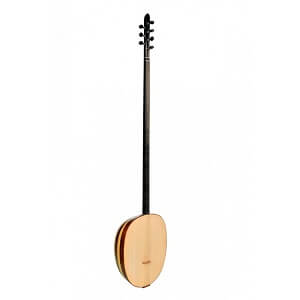Turkish Tambur
 Tanbur (also known as tambur) is one of the most important instrument in the Turkish maqam. It is a stringed instrument that is played with a plectrum or a bow and a tanbur player is called a “tanburi”. It constitues as one of the four instrument of the basic quartet of Turkish classical music. It has been used in different shapes and sizes in the history of music. During the 17th century in Ottoman Empire, it got its final form and became a lot more popular in music. Around that time, mostly musicians who resided in Istanbul used the tanbur instrument in their music and it slowly became a huge part of Turkish music and culture.
Tanbur (also known as tambur) is one of the most important instrument in the Turkish maqam. It is a stringed instrument that is played with a plectrum or a bow and a tanbur player is called a “tanburi”. It constitues as one of the four instrument of the basic quartet of Turkish classical music. It has been used in different shapes and sizes in the history of music. During the 17th century in Ottoman Empire, it got its final form and became a lot more popular in music. Around that time, mostly musicians who resided in Istanbul used the tanbur instrument in their music and it slowly became a huge part of Turkish music and culture.
There are many theories regarding the origins of the tanbur instrument but as it shows more similarities with instruments based in Anatolia and Asia that are mostly used by Turks. It is assumed that the instrument descends from another Turkish instrument, the kopuz. Some believe it descended from Sumerian instrument “pantur.” However there is no way to prove or deny these origin stories, as there is no historic evidence of them.
As we have already explained above, Tanbur (or tambur) is one of the oldest Turkish instruments to date and it has a very important role in Turkish music, mostly classical music. It is believed that the name “Tanbur” comes from the Arabic word “tunbur”. The origins of the tanbur instrument is unclear as it has been around in ages. It is known that the Tanbur instrument has taken many different shapes and sizes, making its way through Asia and birthing similar instruments such as tambura and dombra, but it became the instrument we know today during the seventeenth century in Ottoman Empire. With more and more people showing interest in the instrument and becoming “tanburi”s, which is the name for musicians who can play the tambur instrument, it slowly became one of the most popular and recognizable instruments in Turkey.